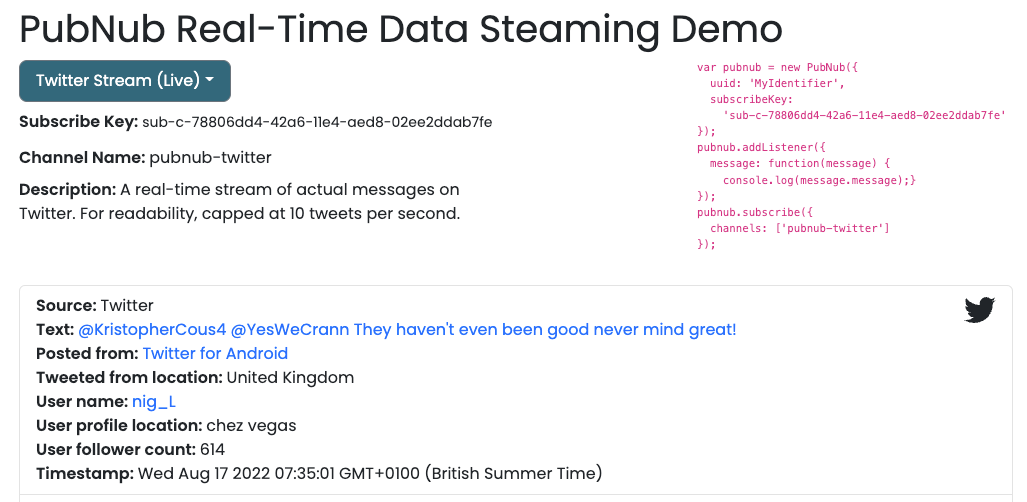Real-Time Data Streaming Demo
Streaming data is a continuous flow of information from various sources in real time. PubNub’s live streaming APIs enable you to generate, process, and deliver streaming data to any number of subscribers. Try our solution for free!


About this demo
Real-Time Data Streaming Use Cases
Business Metrics
Your business generates a lot of critical data, from build statistics, customer analytics to sales data. Aggregate all your statistics with no-code solution into easily digestible forms and take action.
Customer Social Sentiment
How do your customers feel about your product or service? By aggregating the data from all your social streams (facebook, twitter, etc.) and analyzing the sentiment of the comments you can see what is working and what needs improvement.
Logistics Tracking
We have all asked ‘where is my parcel?’ but when you have to answer that question for hundreds of thousands of packages you need a way of tracking in real-time and handling the amount of data as those packages move towards their destinations.
PubNub Can Help
PubNub’s Data Stream Network handles keeping both publishers and subscribers securely connected and ensuring that every piece of data is generally available in real-time, so scale (or the amount of data you’re sending) is never an issue. Streamed data can be seamlessly aggregated into a single source of truth from which you can trigger actions or perform analytics.
We have built sample real-time data streams to make it easy for you to prototype your streaming application. It is those sample data streams that are consumed by this demo app and this demo shows how you can use those sample streams.